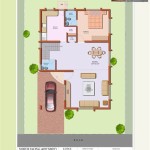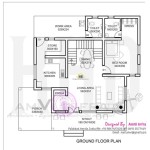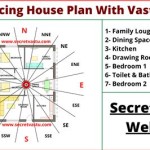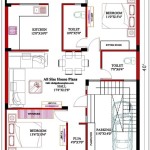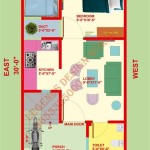Starter House Plans: A Comprehensive Guide
The term "starter house" refers to a smaller, more affordable home, often the first purchase for individuals or young families entering the real estate market. These homes are typically designed to meet immediate needs without incurring significant long-term financial burdens. Starter house plans are therefore critical in navigating the complex process of homeownership, offering a pathway to building equity and establishing a foundation for future housing upgrades.
Choosing the right starter house plan involves careful consideration of various factors, including budget, lifestyle, location, and potential resale value. Understanding the nuances of these plans and their impact on long-term financial well-being is paramount for maximizing the benefits of homeownership.
Key Considerations When Selecting a Starter House Plan
Selecting a starter house plan requires a methodical approach, factoring in both immediate needs and long-term aspirations. This process involves analyzing affordability, assessing spatial requirements, and evaluating the overall layout and design. Choosing wisely at this stage can lead to a financially sound investment and a comfortable living environment.
1. Budget and Affordability: The primary driver in selecting a starter house plan is affordability. Determining a realistic budget is crucial before even considering design options. This budget should encompass not only the cost of the land and construction but also associated expenses like permits, inspections, and potential landscaping. It is equally important to account for ongoing costs such as property taxes, homeowner's insurance, and utilities. Consult with a financial advisor to determine a comfortable mortgage payment that aligns with long-term financial goals. Remember to factor in potential fluctuations in interest rates and property values. Choosing a plan that stretches the budget too thin can lead to financial strain and undermine the overall benefits of homeownership.
Beyond the initial construction costs, consider the long-term maintenance expenses associated with different designs. A smaller, more efficient design might have lower utility bills and require less upkeep than a larger, more complex plan. Selecting durable, low-maintenance materials can also contribute to long-term cost savings. Thoroughly researching and comparing material options is vital to ensure cost-effectiveness over the lifespan of the house.
2. Spatial Needs and Lifestyle: Carefully evaluate the current and anticipated spatial needs. While a starter house is intended to be a temporary dwelling, it should comfortably accommodate the inhabitants for at least a few years. Consider the number of bedrooms and bathrooms required, as well as the size and functionality of common areas such as the living room and kitchen. Assess the need for dedicated spaces like a home office or a playroom, depending on lifestyle and family dynamics.
Consider future growth and potential changes in lifestyle. While it may be tempting to opt for the smallest possible space to minimize costs, anticipate potential changes such as starting a family, pursuing hobbies that require additional space, or accommodating aging parents. A plan that allows for future expansion, even if not implemented immediately, can add significant value and flexibility. Evaluate options for finishing a basement or adding an addition in the future. This foresight is particularly important in evaluating starter house plans.
3. Layout and Design Efficiency: The layout of a starter house plan significantly impacts its functionality and livability. Prioritize efficient use of space to maximize the utility of a smaller footprint. Open-concept designs can create a sense of spaciousness, while thoughtful storage solutions can help minimize clutter. Consider the flow between different areas of the house and ensure that the layout supports daily routines and activities.
Pay close attention to the placement of windows and doors to optimize natural light and ventilation. Adequate natural light can significantly enhance the ambiance of a home and reduce energy consumption. Consider the orientation of the house on the lot to maximize sunlight exposure in key areas during different times of the day. A well-designed layout should also prioritize privacy and minimize noise transmission between different zones of the house.
Choose a design that allows for easy maintenance and cleaning. Simple, uncluttered designs are generally easier to maintain than complex, elaborate designs. Selecting durable, low-maintenance materials can also contribute to long-term convenience. Consider the accessibility of different areas of the house and ensure that they are easily navigable for all occupants.
Exploring Different Types of Starter House Plans
Starter house plans come in a variety of styles and configurations, each with its own unique advantages and disadvantages. Understanding the different types of plans available is essential for making an informed decision that aligns with individual needs and preferences. Some common types of starter house plans include single-story ranch homes, two-story colonial homes, and compact modern designs.
1. Single-Story Ranch Homes: Ranch homes are characterized by their single-level layout, offering ease of access and a streamlined design. These homes are particularly well-suited for individuals with mobility limitations or for those who prefer a low-maintenance living environment. Ranch homes typically feature an open floor plan and an attached garage, making them convenient and functional.
One of the primary advantages of ranch homes is their accessibility. The absence of stairs makes them ideal for aging in place and for individuals with disabilities. Ranch homes are also generally easier to maintain than multi-story homes, as all areas are readily accessible. The open floor plan of many ranch homes creates a sense of spaciousness, even in smaller square footage. However, ranch homes may require a larger lot size than multi-story homes to accommodate the single-level layout.
2. Two-Story Colonial Homes: Colonial homes are a classic style characterized by their symmetrical facade and two-story layout. These homes typically feature a central staircase and a formal living room and dining room. Colonial homes offer a traditional aesthetic and efficient use of space, making them a popular choice for families.
The two-story layout of colonial homes allows for more efficient use of land, as the living space is stacked vertically rather than spread out horizontally. This can be particularly advantageous in areas where land is expensive. Colonial homes also offer a clear separation between living areas and sleeping areas, providing privacy and minimizing noise transmission. However, the presence of stairs can be a drawback for some individuals, and the traditional layout may not appeal to those who prefer a more modern aesthetic.
3. Compact Modern Designs: Compact modern designs prioritize efficiency and minimalist aesthetics. These homes often feature clean lines, open floor plans, and sustainable materials. Compact modern designs are well-suited for urban environments and for individuals who value simplicity and functionality.
One of the key advantages of compact modern designs is their focus on sustainability and energy efficiency. These homes often incorporate features such as solar panels, energy-efficient windows, and water-saving fixtures, which can significantly reduce utility bills. The minimalist aesthetic of compact modern designs also makes them easy to maintain and keep clean. However, the small size of these homes may not be suitable for larger families or for those who require a lot of storage space.
Navigating the Construction Process for Starter House Plans
The construction process for a starter house involves several stages, from initial planning and design to final inspection and occupancy. Understanding the steps involved and working with qualified professionals is crucial for ensuring a smooth and successful build. This process includes securing permits, selecting a contractor, and managing the construction schedule.
1. Obtaining Permits and Approvals: Before commencing construction, it is essential to obtain all necessary permits and approvals from local authorities. This process typically involves submitting detailed plans to the building department and obtaining permits for various aspects of the construction, such as plumbing, electrical, and structural work. Failure to obtain the required permits can result in delays, fines, and even legal action.
Familiarize yourself with local building codes and regulations to ensure that the starter house plan complies with all requirements. These codes are designed to protect public safety and ensure the structural integrity of buildings. Work closely with the architect and contractor to ensure that the plans meet all applicable codes. The permitting process can be time-consuming, so it is important to start early and be prepared to make revisions to the plans if necessary.
2. Selecting a Reputable Contractor: Choosing a qualified and experienced contractor is one of the most important decisions in the construction process. A reputable contractor will have a proven track record of delivering quality workmanship on time and within budget. Obtain multiple bids from different contractors and carefully evaluate their qualifications, references, and insurance coverage.
Check the contractor's license and insurance to ensure that they are properly qualified to perform the work. Ask for references from previous clients and follow up with them to inquire about their experience with the contractor. Review the contractor's contract carefully to ensure that it clearly outlines the scope of work, payment schedule, and warranty provisions. It is advisable to have a lawyer review the contract before signing it.
3. Managing the Construction Schedule: Effective management of the construction schedule is crucial for minimizing delays and cost overruns. Work closely with the contractor to develop a realistic schedule and track progress regularly. Communicate any concerns or questions promptly and be prepared to make timely decisions to keep the project on track.
Establish clear lines of communication with the contractor and schedule regular meetings to discuss progress and address any issues that arise. Visit the construction site regularly to monitor progress and ensure that the work is being performed according to the plans. Be prepared to make adjustments to the schedule if unforeseen circumstances arise, such as weather delays or material shortages. Maintaining open communication and collaboration with the contractor is essential for a successful construction project.

Simple Starter House Plans First Time Buyer Drummondhouseplans

Two Bedroom Starter Home Plan 52209wm Architectural Designs House Plans

Plan 21785dr Attractive Starter Home Sims House Plans Blueprints
Starter Home Floor Plans For 2024 Builder

Plan 059h 0178 The House

27 Adorable Free Tiny House Floor Plans Craft Mart
Starter Home Floor Plans For 2024 Builder

Plan 62645dj Split Bedroom Starter Home Plans House Tiny

2 Bedroom House Plan Examples

1940s House Plans These Vintage Starter Home Designs Were Small But Beautiful Americana Cottage Floor


